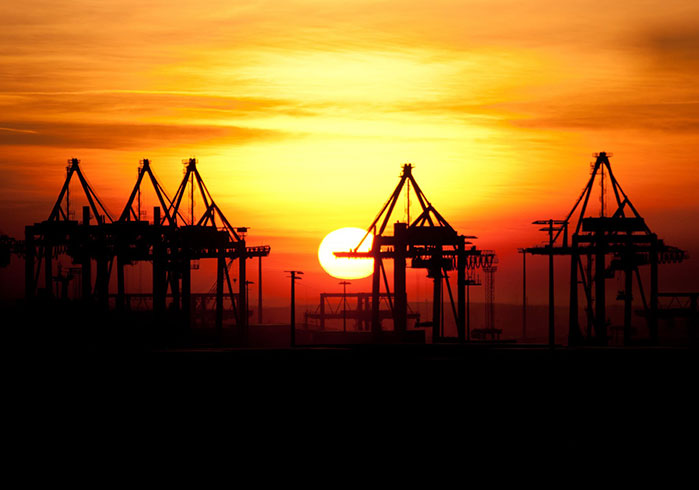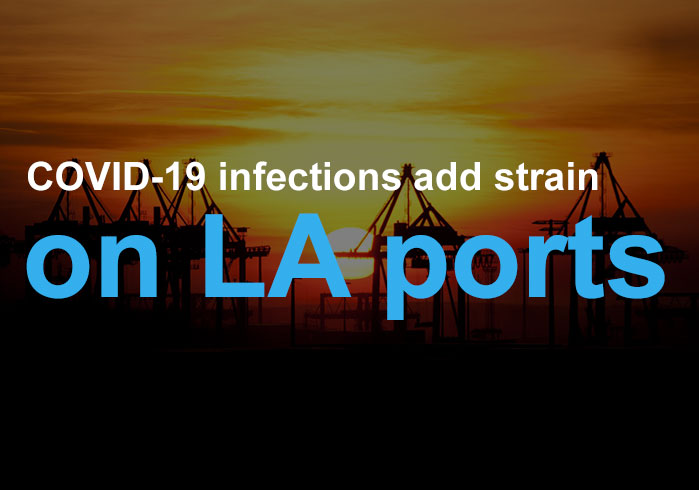
The pandemic is having a devastating impact on the shipping industry and dockworkers in particular. The latest estimates show that about 700 dockworkers operating in Long Beach and Los Angeles have been diagnosed with COVID-19. Besides, the atmosphere of panic has increased with the increasing number of dockworkers that are requesting time off due to the pandemic.
Experts are worried that the combination of sick leave and illness could severely slow down this niche which is worth billions of dollars. Besides, the logistics industry relies on these twin ports and their failure to operate at full capacity could have long-term effects. A battered economy can hardly take any more stress, particularly from a vital industry such as shipping.
The Growing Infection Rate
The problems are made worse by the growing infection rates among longshore workers. At the same time, the California area has been badly hit by the virus. Because there is an unexpected surge in imports (mainly because more people are eschewing face-to-face contact and also purchasing protective equipment); every worker is needed to keep up.
Already there are long lines to process imports into the USA and rising infection rates are not going to help the situation. Union leaders, port executives, and elected officials have been involved in campaigns that support the urgent vaccination of dockworkers. If that strategy fails, there is a real concern that the terminals could shut down due to lack of staff.
Eugene Seroka (an executive at the LA port) says that they have more cargo than skilled labor at the moment. More specifically, there are about 1800 workers that are missing in action due to the pandemic. This group comprises already identified infections, those at risk and isolation, as well as those that are subject to contact tracing or pending diagnosis.
The problem has hit workplaces throughout California; devastating neighborhoods, large warehouses, and all sorts of businesses in the process. Meanwhile, the community faces restrictive social distancing requirements. Many businesses are struggling to remain afloat as their customers are kept at home.
Because the pandemic has continued to spread, containment remains an unattainable dream in the short run at least. Essential workers have been badly hit, and yet have to continue working to keep communities safe and functional. Dockworkers along with store clerks have been included in the list of essential workers and they are facing similar challenges to workers in healthcare.
How the Virus Spread
Barbara Ferrer of the LA County Health Department has specifically highlighted the plight of dockworkers who are facing a high risk of infection and yet have to continue working if the shipping industry is to survive. Apart from the confirmed cases, there is a real fear of infection that is driving workers away from ports. Many longshore workers are on the waiting lists for vaccination.
There have been reports of hundreds of outbreaks in the latest surge of the COVID-19 pandemic. One of the key determinants is community transmission in a working area where many people have to be in close contact. The government agencies just have enough vaccines to deal with those who need them, but the process is still a bit slow.
During the first phases of the pandemic, the container volume at the LA port fell by about 19%. However, it rose by 50% again in the second part of 2020. This has led to a tight schedule and high demand for space and equipment. This is a reflection of a client base that is now focusing on buying retail goods; as opposed to leisure activities that involve some level of human-to-human contact.
Government Response
Politicians have waded into the crisis. Recent comments by representatives Alan Lowenthal (D-Long Beach) and Nanette Diaz Barragan (D-San Pedro) raise the prospect of a port shutdown if no urgent action is taken. The two politicians wrote to LA County Health officials on the 15th of January 2021 to inquire about progress. This is a serious problem that could affect entire communities in the South Bay area that rely on shipping. Besides, the entire USA should also be concerned if there is anything that reduces the ability to bring in essential imports.
Other LA officials are raising the alarm as well. For example, mayors Robert Garcia (Long Beach) and Eric Garcetti (Los Angeles) joined forces with local officials to write to Governor Gavin Newsom and his Health and Human Services Secretary (Mark Ghaly). The letter urged an increase in the number and rates of vaccinations for the population of Southern California dock workers who number about 15,000.
The potential implications for critical infrastructure and national security cannot be ignored. Moreover, even essential medical supplies are supposed to go through the ports. The failure to get workers back to the ports might mean that the fight against COVID-19 is hampered by the lack of imported equipment and other medical supplies.
Vaccine priorities are determined by the state. At the moment first responders, healthcare workers, and skilled medical practitioners are first in line. Yet, there are about 450,000 healthcare workers in LA County alone that are still waiting for a vaccine. It is only after those workers are successfully vaccinated that other workers (including dockworkers) will move up the priority list. That could happen as early as March 2021.
At the same time, union leaders and port executives are suggesting that it is appropriate for dockworkers to be included as the next priority after front-line workers such as medical officers. Governor Newsom announced that the vaccination program would be open to seniors (65 and older) this week. Despite opening the appropriate portals, there are still not enough vaccines to meet demand.
There is as yet no comment from the governor’s office about dockworker vaccinations. Currently, longshore workers are reporting infections via a dedicated portal that is operated by the Pacific Maritime Association and ILWU. By the 17th of January 2021, a total of 694 dockworkers had reported infections and 12 of them had subsequently died.
Three presidents of the Southern California ILWU wrote to the maritime association this week to confirm that Fenix Marine Services had reported an outbreak involving 15 workers. The LA County regulations stipulate that any workplace with three or more confirmed cases (within 2 weeks) must formally notify the county public health department. So far San Pedro Bay port complex has not yet complied and many are failing to do so.
The CEO of the maritime association, James McKenna speculates that there is probably a high level of under-reporting. This raises the prospect that the public health officials are not getting the information that they need to mount an appropriate response. Workers who are concerned about health and safety violations relating to COVID-19 can report anonymously and online. They can also call the helpline on 888-700-9995.
Wrapping Up
Unfortunately, the county is not yet able to track infections by occupation given the sporadic nature of reports. Some officials are even disputing the estimates of workers that have been put out of action by the pandemic, arguing that workers may be absent for non-Covid related issues. The longshore union reports a positivity rate of 65% for LA and 71% for Long Beach for the samples tested so far. Other officials dispute these estimates and suggest that some negatives may not be included in the calculation.
Notably, Mario Cordero of Port Long Beach joins Seroka in suggesting that they do not expect terminal shutdowns unless something drastically changes. However, they are continuing with efforts to vaccinate and test. The pandemic is reducing the workforce that is available to bring essential supplies to the USA.



